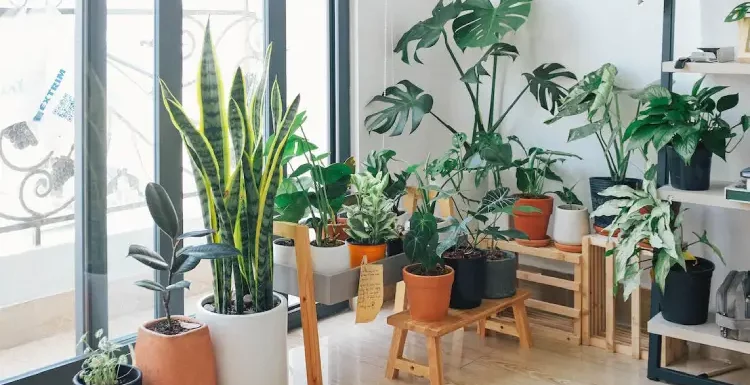
The peace of nature may be brought into your house by creating an indoor garden. While picking the proper plants is important, choosing the ideal indoor planter is just as important to make sure your plants flourish. Indoor planters are essential to your green friends’ general health in addition to acting as containers for them. This tutorial will walk you through four magnificent indoor planter varieties, each of which is intended to maintain the health of your plants and the vibrancy of your environment.
1. Ceramic Planters: Timeless Elegance with Functionality
Ceramic planters are recognized for their adaptable styles and timeless appeal. These planters are made from fired clay and are available in a variety of colors, sizes, and designs, making them perfect for different types of interior design. They are porous, which prevents water stagnation and encourages healthy development by allowing air circulation to the plant’s roots. Succulents and cactus, which need soil with good drainage, benefit greatly from ceramic pots. If you are a fan of Moroccan home decor, they can also go with them just fine.
One of the primary benefits of ceramic planters is their capacity to maintain constant soil temperatures, acting as insulation during both freezing winters and scorching summers. Because of their resilience, plant roots may develop strongly in an environment that is favorable for them. Furthermore, ceramic planters often include a drainage hole at the bottom that allows extra water to drain out and prevents root rot. Choose a ceramic planter with a matching saucer to collect spilled water to provide your plants with the proper amount of hydration.
2. Self-Watering Planters: Effortless Hydration for Busy Lifestyles
Self-watering planters are a brilliant option for those who have hectic schedules or have a habit of forgetting to water their plants regularly. These planters include an integrated reservoir that holds water and enables the plant to use it as required. The reservoir is connected to the soil via a wick or capillary system, which guarantees a constant flow of water to the plant’s roots. With the help of this technology, overwatering is prevented, a problem that often causes deterioration and root suffocation.
Herbs, ferns, and floral kinds are just a few of the plants that thrive in self-watering pots. To keep your plants hydrated, even if you forget to water them for a few days, they provide a steady stream of water. Larger plants that demand a lot of water benefit, especially from these pots.
3. Hanging Planters: Maximizing Vertical Space with Style
A unique and space-saving approach to adding greenery to your house is hanging planters. Because these planters are hanging from the ceiling, your plants may cascade elegantly from them, making for an eye-catching show. Small herbs and succulents, as well as trailing plants like pothos, ivy, and spider plants, thrive best in hanging pots. They not only save floor space but also provide your home decor with a dash of natural beauty.
Consider the weight of the plant when it is fully grown when selecting a hanging planter, and make sure both the planter and the ceiling support can withstand the burden. There are several possibilities for hanging planters to complement your design style, including macrame, ceramic, and metal. Additionally, these planters let you strategically arrange your plants near windows or above tables to maximize their exposure to natural light. Additionally, hanging planters have plenty of air, which helps your plants grow and breathe.
4. Terrariums: Miniature Ecosystems for Delicate Plants
Miniature ecosystems contained in glass, known as terrariums, are ideal for fragile plants like ferns, air plants, and mosses. For plants that thrive in extreme humidity, these tightly closed containers offer a regulated atmosphere, retaining moisture and generating a humid microclimate within. In addition to being useful, terrariums are also eye-catching ornamental accents that give your living area a whimsical touch.
Layering ingredients like activated charcoal, pebbles, soil, and ornamental components like sand or stones is necessary to create a terrarium. These layers provide a healthy environment for your plants by ensuring correct drainage and preventing excess moisture. Terrariums are particularly well-liked for plants that need indirect light, which makes them ideal for shady nooks or spaces with little natural light. For those who lead hectic lives, terrariums are a great option since they don’t need as much watering as open-air plants do.
Conclusion
These magnificent indoor planters will not only improve the visual appeal of your house but will also assure the health and vigor of your plant friends. You may create an atmosphere where nature flourishes and brings beauty and peace to your house by choosing planters that are appropriate for your plants’ demands and your interior design. The correct planter, which encourages development, well-being, and a lively environment in your house, is not just a vessel; it’s an essential component in the comprehensive maintenance of your indoor garden.
